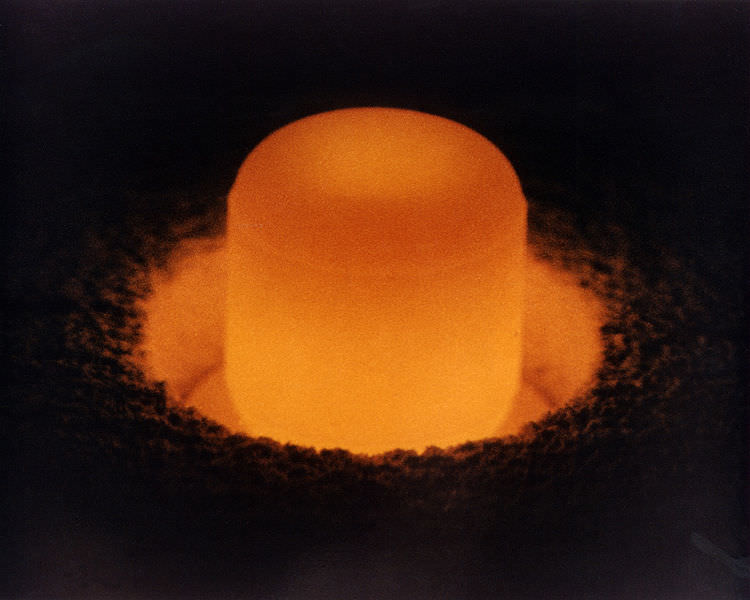Subsurface oceans of liquid water are a common feature of the moon’s of Jupiter and Saturn. Researchers are exploring whether the icy moons of Uranus and Neptune might have them as well. Their new paper suggests future missions to the outer Solar System could measure the rotation of the moons and detect any wobbles pointing to liquid oceans. Less wobble means the moons is mostly solid but large wobbles can indicate ice floating on an ocean of liquid.
Continue reading “Uranus’s Wobbling Moons Could Point to Oceans Under the Ice”The Favorite Solar System Moons of Planetary Geologists; An In-Depth Discussion
The moons of our Solar System have garnered quite a lot of attention in the last few years, especially pertaining to astrobiology and the search for life beyond Earth. From the Galilean moons of Jupiter to the geysers of Enceladus to the methane lakes on Titan, these small worlds continue to humble us with both their awe and mystery. But do the very same scientists who study these mysterious and intriguing worlds have their own favorite moons? As it turns out, seven such planetary geologists were kind enough to share their favorite Solar System moons with Universe Today!
Continue reading “The Favorite Solar System Moons of Planetary Geologists; An In-Depth Discussion”Jupiter’s Moon Ganymede

In 1610, Galileo Galilei looked up at the night sky through a telescope of his own design. Spotting Jupiter, he noted the presence of several “luminous objects” surrounding it, which he initially took for stars. In time, he would notice that these “stars” were orbiting the planet, and realized that they were in fact Jupiter’s moons – which would come to be named Io, Europa, Ganymede and Callisto.
Of these, Ganymede is the largest, and boasts many fascinating characteristics. In addition to being the largest moon in the Solar System, it is also larger than even the planet Mercury. It is the only satellite in the Solar System known to possess a magnetosphere, has a thin oxygen atmosphere, and (much like its fellow-moons, Europa and Callisto) is believed to have an interior ocean.
Continue reading “Jupiter’s Moon Ganymede”
Astronomy Cast Ep. 384: Escaping Probes
The gravity of the Earth is a tough thing to escape, but breaking free from the gravity of the Sun is on a whole other level. But humans have achieved this amazing accomplishment, and right now there are several spacecraft leaving the Solar System and never coming back.
How Long Will Our Spacecraft Survive?
There are many hazards out there, eager to disrupt and dismantle the mighty machines we send out into space. How long can they survive to perform their important missions?
Every few months, an eager new spacecraft arrives on the launch pad, ready for its date with destiny. If we don’t blow it all to bits with a launch vehicle failure, it’ll be gently placed into orbit with surgical precision. Then it’ll carry out a noble mission of exploring the Solar System, analyzing the Earth, or ensuring we have an infinite number of radio stations in our cars, allowing us to never be satisfied with any of them.
Space is hostile. Not just to fragile hu-mans, but also to our anthropomorphized Number Five is alive robotic spacecraft which we uncaringly send to do our bidding. There are many hazards out there, eager to disrupt and dismantle our stalwart electronic companions. Oblivion feeds voraciously on our ever trusting space scouts and their tiny delicate robotic hearts, so many well before their time.
How long have they got? How long will our spacecraft survive as we cast them on their suicide missions to “go look at stuff on behalf of the mighty human empire”? When spacecraft are hurled into the void, all mission planners know they’re living on borrowed time.
The intrepid Mars Exploration Rovers, Spirit and Opportunity, were only expected to operate for 3 months. NASA’s Spitzer Space Telescope carried a tank of expendable helium coolant to let it see the dimmest objects in the infrared spectrum.
Sometimes the spacecraft wear down for unexpected reasons, like electronic glitches, or parts wearing out. Hubble was equipped with rotating gyroscopes that eventually wore out over time, making it more difficult to steer at its targets, and only an intervention by rescue and repair allowed the mission to keep going.
In general, a spacecraft is expected to last a few months to a few years. Spirit and Opportunity only had a planned mission of 3 months. It took Spirit more than 6 dauntless years to finally succumb to the hostile Martian environment. Opportunity is still kicking more than a decade later, thanks to some very careful driving and gusts of Martian wind clearing off its solar panels which didn’t surprise anybody.

ESA’s Rosetta spacecraft needed to survive for 10 years in a dormant state before its encounter with Comet 67/P. It’s expected to last until the end of 2015. Then its orbit will carry it too far from the Sun to operate its solar panels, then it’ll go to sleep one last time.
As a testament to luck and remarkable feats of engineering, some survive much longer than anyone ever expected. NASA’s Voyager Spacecraft, launched in 1977, are still going and communicating with Earth. It’s believed they’ll survive until 2025, when their radioisotope thermoelectric generators stop producing power.
At which point they’ll return to the Earth at the heart of a massive alien spacecraft and scare the bejeebus out of us.
… And I know what you’re thinking. Once our spacecraft stop functioning, they’ll still exist. Perhaps getting close enough to another source of solar energy to start transmitting again.
So, how long will our spacecraft hold together in something roughly robot-probe shaped? Any spacecraft orbiting a planet or Moon won’t last long geologically before they’re given a rocky kiss of death with help from a big group hug from gravity.
This might take a decade, a hundred years or a million. Eventually, that spacecraft is racing towards a well distributed grave on its new home.
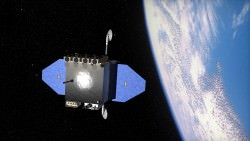
A spacecraft that’s orbiting the Sun should last much longer. However, a gravitational threesome with a planet or large asteroid could drag it into a solar death spiral or hurl it into a planet. There are asteroids whipping around from the formation of the Solar System, and they haven’t crashed into anything… yet.
A lucky spacecraft might last hundreds of millions, or even billions of years. Our little robot friends that leave the gravitational pull of the Solar System have a chance of making it for the long haul.
Once they’re out in interstellar space, there will be very few micrometeorites to punch little holes in them. Unless they happen to run into another star – and that’s very unlikely – they’ll travel through space until they’re worn away over billions of years, and who knows what that means for future alien archaeology students. The golden records on the Voyager spacecraft were designed to still be playable for a billion years in space.
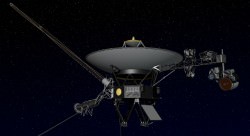
It’s tough to keep a spacecraft operating in space. It’s a really hostile place, ready to fry their little silicon brains, scuttle them with a micrometeorite, or just erode them away over an incomprehensible length of time.
Are horrible space agency fiends tossing our trusting big eyed robot pals to their doom on one-way missions into the abyss? Don’t worry viewers, I have it on good authority this is what the robots want.
Beloved astronaut Chris Hadfield said if Voyager had stayed at home where it’s safe, it would’ve been sad forever, because it never would have discovered things. I think he’s right, Voyager is as happy as it could be exploring the parts of our Universe the rest of us aren’t able to go and see for ourselves.
What’s your favorite spacecraft survivor story? Tell us in the comments below.
U.S. To Restart Plutonium Production for Deep Space Exploration
The end of NASA’s plutonium shortage may be in sight. On Monday March 18th, NASA’s planetary science division head Jim Green announced that production of Plutonium-238 (Pu-238) by the United States Department of Energy (DOE) is currently in the test phases leading up to a restart of full scale production.
“By the end of the calendar year, we’ll have a complete plan from the Department of Energy on how they’ll be able to satisfy our requirement of 1.5 to 2 kilograms a year.” Green said at the 44th Lunar and Planetary Science Conference being held in Woodlands, Texas this past Monday.
This news comes none too soon. We’ve written previously on the impending Plutonium shortage and the consequences it has for future deep space exploration. Solar power is adequate in most cases when you explore the inner solar system, but when you venture out beyond the asteroid belt, you need nuclear power to do it.
Production of the isotope Pu-238 was a fortunate consequence of the Cold War. First produced by Glen Seaborg in 1940, the weapons grade isotope of plutonium (-239) is produced via bombarding neptunium (which itself is a decay product of uranium-238) with neutrons. Use the same target isotope of Neptunium-237 in a fast reactor, and Pu-238 is the result. Pu-238 produces 280x times the decay heat at 560 watts per kilogram versus weapons grade Pu-239 and is ideal as a compact source of energy for deep space exploration.
Since 1961, over 26 U.S. spacecraft have been launched carrying Multi-Mission Radioisotope Thermoelectric Generators (MMRTG, or formerly simply RTGs) as power sources and have explored every planet except Mercury. RTGs were used by the Apollo Lunar Surface Experiments Package (ALSEP) science payloads left on by the astronauts on the Moon, and Cassini, Mars Curiosity and New Horizons enroute to explore Pluto in July 2015 are all nuclear powered.
Plutonium powered RTGs are the only technology that we have currently in use that can carry out deep space exploration. NASA’s Juno spacecraft will be the first to reach Jupiter in 2016 without the use of a nuclear-powered RTG, but it will need to employ 3 enormous 2.7 x 8.9 metre solar panels to do it.

The problem is, plutonium production in the U.S. ceased in 1988 with the end of the Cold War. How much Plutonium-238 NASA and the DOE has stockpiled is classified, but it has been speculated that it has at most enough for one more large Flag Ship class mission and perhaps a small Scout class mission. Plus, once weapons grade plutonium-239 is manufactured, there’s no re-processing it the desired Pu-238 isotope. The plutonium that currently powers Curiosity across the surface of Mars was bought from the Russians, and that source ended in 2010. New Horizons is equipped with a spare MMRTG that was built for Cassini, which was launched in 1999.
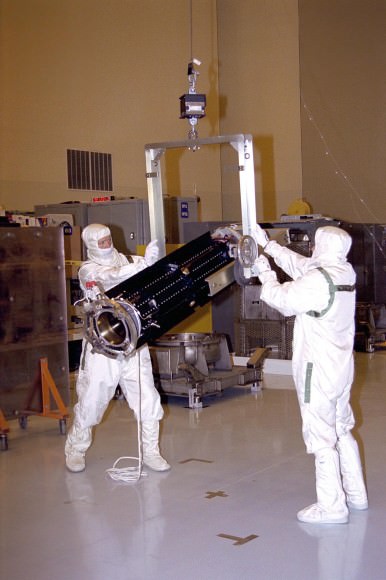
As an added bonus, plutonium powered missions often exceed expectations as well. For example, the Voyager 1 & 2 spacecraft had an original mission duration of five years and are now expected to continue well into their fifth decade of operation. Mars Curiosity doesn’t suffer from the issues of “dusty solar panels” that plagued Spirit and Opportunity and can operate through the long Martian winter. Incidentally, while the Spirit and Opportunity rovers were not nuclear powered, they did employ tiny pellets of plutonium oxide in their joints to stay warm, as well as radioactive curium to provide neutron sources in their spectrometers. It’s even quite possible that any alien intelligence stumbles upon the five spacecraft escaping our solar system (Pioneer 10 & 11, Voyagers 1 & 2, and New Horizons) could conceivably date their departure from Earth by measuring the decay of their plutonium power source. (Pu-238 has a half life of 87.7 years and eventually decays after transitioning through a long series of daughter isotopes into lead-206).
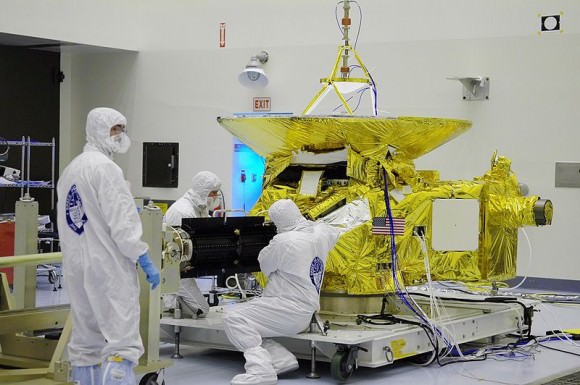
The current production run of Pu-238 will be carried out at the Oak Ridge National Laboratory (ORNL) using its High Flux Isotope Reactor (HFIR). “Old” Pu-238 can also be revived by adding newly manufactured Pu-238 to it.
“For every 1 kilogram, we really revive two kilograms of the older plutonium by mixing it… it’s a critical part of our process to be able to utilize our existing supply at the energy density we want it,” Green told a recent Mars exploration planning committee.
Still, full target production of 1.5 kilograms per year may be some time off. For context, the Mars rover Curiosity utilizes 4.8 kilograms of Pu-238, and New Horizons contains 11 kilograms. No missions to the outer planets have left Earth since the launch of Curiosity in November 2011, and the next mission likely to sport an RTG is the proposed Mars 2020 rover. Ideas on the drawing board such as a Titan lake lander and a Jupiter Icy Moons mission would all be nuclear powered.
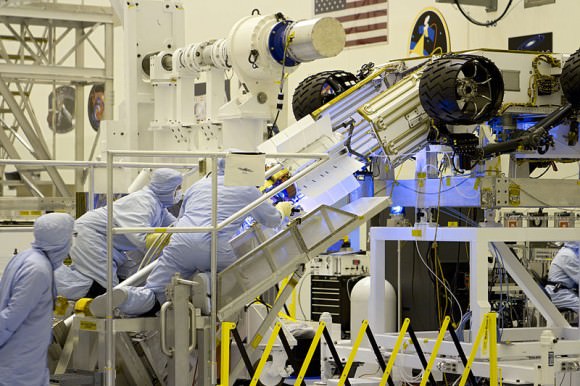
Along with new plutonium production, NASA plans to have two new RTGs dubbed Advanced Stirling Radioisotope Generators (ASRGs) available by 2016. While more efficient, the ASRG may not always be the device of choice. For example, Curiosity uses its MMRTG waste heat to keep instruments warm via Freon circulation. Curiosity also had to vent waste heat produced by the 110-watt generator while cooped up in its aero shell enroute to Mars.
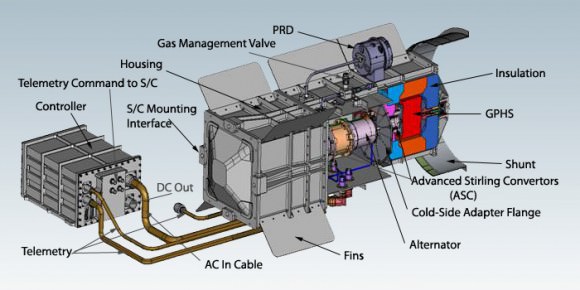
And of course, there are the added precautions that come with launching a nuclear payload. The President of the United States had to sign off on the launch of Curiosity from the Florida Space Coast. The launch of Cassini, New Horizons, and Curiosity all drew a scattering of protesters, as does anything nuclear related. Never mind that coal fired power plants produce radioactive polonium, radon and thorium as an undesired by-product daily.
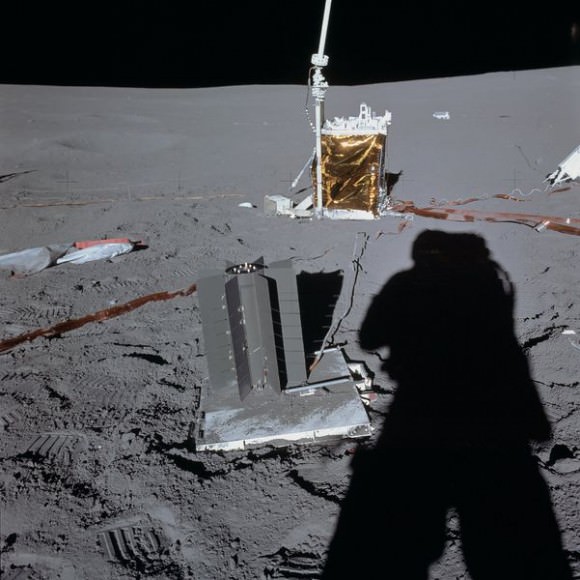
Said launches aren’t without hazards, albeit with risks that can be mitigated and managed. One of the most notorious space-related nuclear accidents occurred early in the U.S. space program with the loss of an RTG-equipped Transit-5BN-3 satellite off of the coast of Madagascar shortly after launch in 1964. And when Apollo 13 had to abort and return to Earth, the astronauts were directed to ditch the Aquarius Landing Module along with its nuclear-powered science experiments meant for the surface of the Moon in the Pacific Ocean near the island of Fiji. (They don’t tell you that in the movie) One wonders if it would be cost effective to “resurrect” this RTG from the ocean floor for a future space mission. On previous nuclear-equipped launches such as New Horizons, NASA placed the chance of a “launch accident that could release plutonium” at 350-to-1 against Even then, the shielded RTG is “over-engineered” to survive an explosion and impact with the water.
But the risks are worth the gain in terms of new solar system discoveries. In a brave new future of space exploration, the restart of plutonium production for peaceful purposes gives us hope. To paraphrase Carl Sagan, space travel is one of the best uses of nuclear fission that we can think of!
Case Closed on the Pioneer Anomaly
Caption: An artist’s view of a Pioneer spacecraft heading into interstellar space. Both Pioneer 10 and 11 are on trajectories that will eventually take them out of our solar system. Image credit: NASA
The case of the Pioneer Anomaly has intrigued and perplexed scientists, engineers and the space-savvy public since 1980, when analysis of tracking data from the twin Pioneer spacecraft showed a small, unexplained slowing of the duo. The answer to this puzzle — now firmly found — lies not in weird physics or mysterious dark matter, but simply the effect of heat pushing back on the spacecraft – heat from the spacecraft itself, emanating from electrical current flowing through instruments and the thermoelectric power supply.
If you’re thinking, “hasn’t this mystery been solved before?” – you’d be right.
Slava Turyshev from the Jet Propulsion Laboratory has laboriously worked on the project since 2004, recovering files from back corners of NASA closets and boxes that were on their way to the trash, converting 1970s punch card data to today’s digital format, and poring over all the data that the spacecraft have beamed back to Earth from billions of miles away.
Along the way, Turyshev has published a couple of papers on his work (here’s one from 2011), and in April of this year, The Planetary Society – who was supporting in part Turyshev’s research – claimed victory that the Pioneer Anomaly was solved.
But now, Turyshev has officially published his findings in the journal Physical Review Letters, and JPL saw fit to put out a press release.
However, over the years other scientists figured out that the culprit might be the heat coming from the spacecraft’s components. In 2001, for example, a scientist named Louis K. Sheffer published a paper, “Conventional Forces can Explain the Anomalous Acceleration of Pioneer 10” and with some good number crunching, determined that “non-isotropic radiation of spacecraft heat” could account for the slowing and “that the entire effect can be explained without the need for new physics.”
Why Sheffer’s paper wasn’t considered more seriously is uncertain, but perhaps at that time the “new physics” idea – that we may have to revise our understanding of gravitational physics — was more intriguing than a mundane effect like heat from the spacecraft’s systems.
But nonetheless, it appears everyone is satisfied with the explanation dutifully resolved by Turyshev and his team of mostly volunteer helpers. And Turyshev’s description of the effect is beautiful in its simplicity:
“The effect is something like when you’re driving a car and the photons from your headlights are pushing you backward,” he said. “It is very subtle.”
Launched in 1972 and 1973 respectively, Pioneer 10 and 11 are still heading on an outward trajectory from our Sun. In the early 1980s, navigators saw a deceleration on the two spacecraft, in the direction back toward the Sun, as the spacecraft were approaching Saturn. They dismissed it as the effect of small amounts of leftover propellant still in the fuel lines. But by 1998, as the spacecraft kept traveling on their journey and were over 13 billion kilometers (8 billion miles) away from the Sun, a group of scientists led by John Anderson of JPL realized there was an actual deceleration of about 300 inches per day squared (0.9 nanometers per second squared). They were the ones who raised the possibility that this could be some new type of physics that contradicted Einstein’s general theory of relativity.
After that, all sorts of theories surfaced, some fairly wacky, some more serious.
In 2004, Turyshev decided to really dig into the matter and started gathering records stored all over the country to analyze the data to see if he could definitively figure out the source of the deceleration. In part, according to JPL, Turyshev and his colleagues were contemplating a deep space physics mission to investigate the anomaly, and he wanted to be sure there was one before asking NASA for a spacecraft.
And so they went searching for Doppler data, telemetry data, and anything they could find about the spacecraft, including picking the brains of navigators who worked with the spacecraft over the years.
They collected more than 43 gigabytes of data, which may not seem like a lot now, but is quite a lot of data for the 1970s. He also managed to save a vintage tape machine that was about to be discarded, so he could play the magnetic tapes. Viktor Toth from Canada, heard about the effort and helped create a program that could read the telemetry tapes and clean up the old data.
They saw that what was happening to Pioneer wasn’t happening to other spacecraft, mostly because of the way the spacecraft were built. For example, the Voyager spacecraft are less sensitive to the effect seen on Pioneer, because its thrusters align it along three axes, whereas the Pioneer spacecraft rely on spinning to stay stable.
Turyshev and his colleagues were able to calculate the heat put out by the electrical subsystems and the decay of plutonium in the Pioneer power sources, which matched the anomalous acceleration seen on both Pioneers.
“The story is finding its conclusion because it turns out that standard physics prevail,” Turyshev said. “While of course it would’ve been exciting to discover a new kind of physics, we did solve a mystery.”
Turyshev’s paper: Finding the Origin of the Pioneer Anomaly.
Source: JPL
A Varying Venusian Vortex

Our neighboring planet Venus really is a world of extremes; searing surface temperatures, crushing air pressure, sulfuric acid clouds…Venus pretty much pushes the envelope on every aspect of rocky-planet existence. And now here’s one more thing that made scientists do a double-take: a shape-shifting vortex swirling around Venus’ south pole!
The presence of a cyclonic storm around Venus’ poles – both north and south – has been known since Mariner 10’s pass in 1974 and then afterwards during the Pioneer Venus mission when a downwardly-spiraling formation of clouds over the planet’s north pole was imaged in infrared. It wasn’t until ESA’s Venus Express orbiter arrived in 2006 that the cyclone at the south pole was directly observed via the Visible and Infrared Thermal Imaging Spectrometer (VIRTIS) instrument…and it proved to be much stranger than anything previously expected. Continue reading “A Varying Venusian Vortex”




